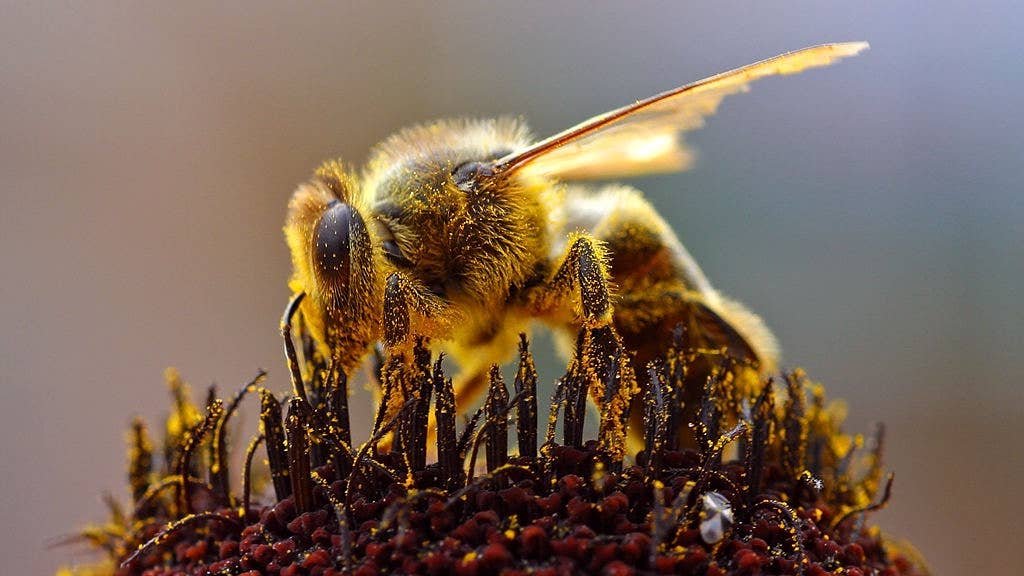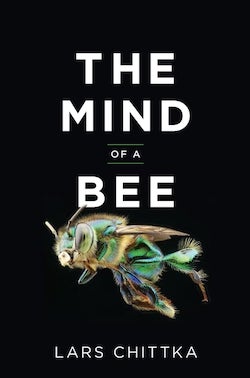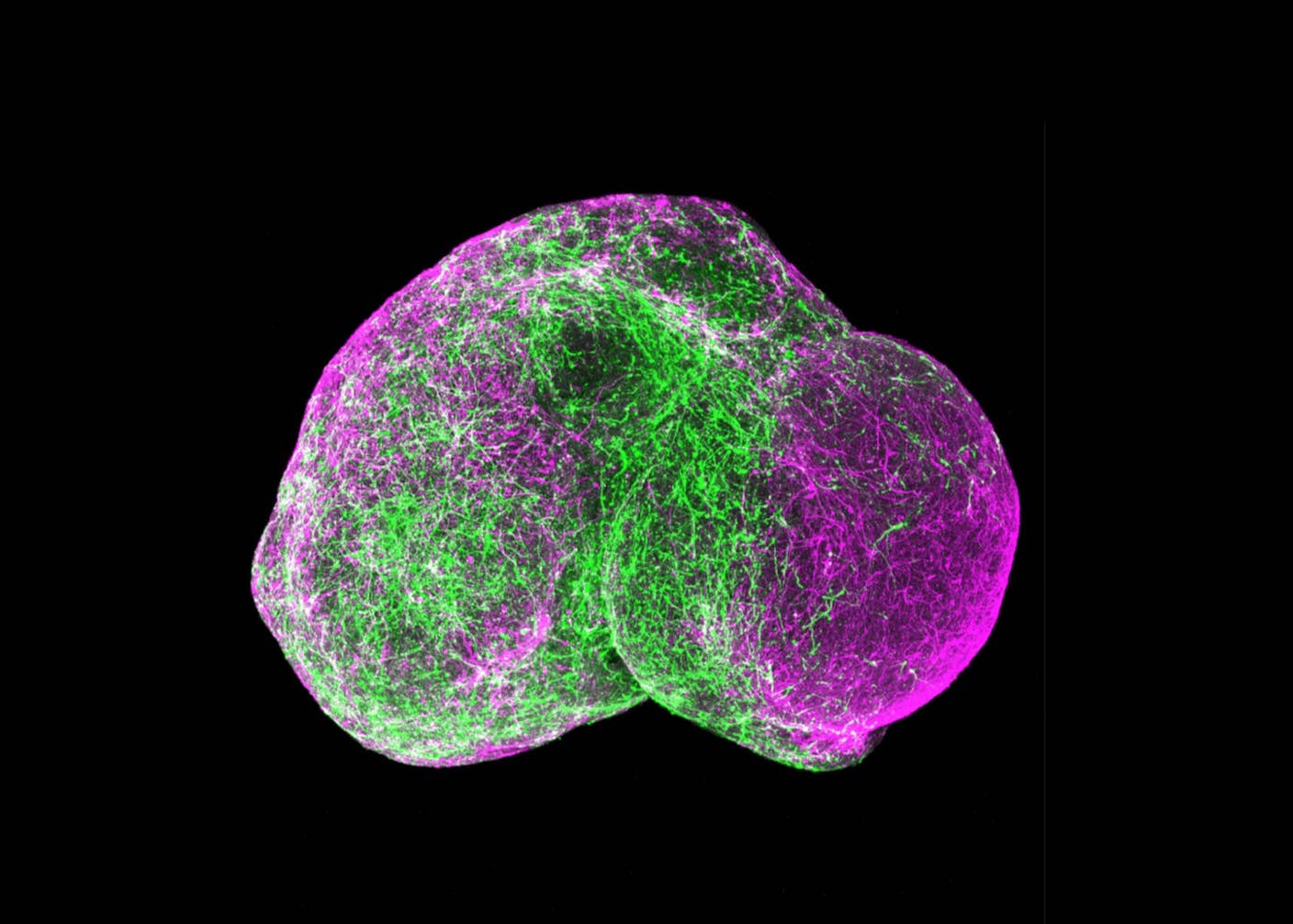What Constitutes a Mind? Lars Chittka Challenges Our Perception of Sentience With the Smallest of Creatures

Share
At the beginning of my research career around 15 years ago, any suggestion that a bee, or any invertebrate, had a mind of its own or that it could experience the world in an intricate and multifaceted way would be met with ridicule. As Lars Chittka points out in the opening chapters of The Mind of a Bee, the attribution of human emotions and experiences was seen as naivety and ignorance; anthropomorphism was a dirty word.
Pet owners eagerly ascribe emotions to their animals, but the simple brain of a bee surely could not experience the rich tapestry that is our existence. They are far too simplistic and robotic, right?

Lars Chittka has been researching honeybees for the past 30 years. The Mind of a Bee is a collection of his research stories. It also covers the influential figures in bee research and provides a historical perspective on the research that much behavioral work is built on today.
People have long been curious about the behavior of bees. Many questions posed in the 1800s are still around. While Chittka’s beautifully collated and captivating “story” does not present research results that are necessarily new, to read them presented together like this, I find myself tantalized by questions I had not thought to ponder. For example, how do bees decide who stays and who leaves when a swarm is formed?
The World of a Bee
The book opens by challenging you to put yourself into the world of a bee.
A honeybee’s experience of the world is so completely foreign to our own that to understand and research it is a challenge not to be underestimated. Indeed, it is understandable that we have relegated the experience of bees to something simplistic and robotic when you discover the difficulties faced by researchers.
First, picture yourself as a bee. You have wings, allowing flight. Your vision is not as sharp anymore, worse than your grandfather’s with his coke-bottle glasses, but you see things more quickly. Life is experienced on a faster timeline—what was once a movie is now more like a series of images in a slideshow.
The antennae protruding from your head function as hands, ears, tongues, and noses, all in one. You can tell if someone has visited a flower before you—a flower you picked out of a field of hundreds by its scent, and which you found by following the directions you felt a fellow bee dance for you inside the pitch-black hive perhaps ten kilometers from your current position.
Chittka then invites us to imagine the life of the bee. Upon exiting the hive for the first time, you must learn its location through a series of flights—behavior observed in other central-place foragers such as ants and wasps. Failure to recognize your hive and return home equals death.
Once you have memorized the location of your hive, you then must successfully navigate your way to and from various resource-rich patches as efficiently as possible, learning new locations, the timing of certain flowers releasing their nectar, and the techniques required to manipulate other flowers into relinquishing theirs.
So far, this sounds instinctual, a basic response to hunger. Yet Chittka presents additional research—historical and current—that provides insights into the cognitive skills of bees. We learn that bees can count. They can learn rules and categorize flowers. And they can learn from others, not only which flowers are rewarding, but how to access them.
One of my favorite experiments, perhaps for the videos that accompanied the publication, is of bumblebees pushing balls into holes to get rewards. This skill can be learnt by an observer bee and, what is truly fascinating, it can be improved upon. The observer bee can solve the task by copying the goal rather than strictly copying the technique, demonstrating an understanding of the task and the desired outcome.
But when would a bee ever need to push a ball into a hole to be rewarded with some “nectar”?
As Chittka rightly points out, the questions we pose to understand the minds of bees must have a biological relevance to make sense. That is, we need to understand what is important to the survival of bees, what is essential in their existence, and frame our questions of intelligence and sentience around that aspect. If we ask the wrong questions, we will never fully understand the answers—like asking a fish to climb a tree and finding it lacking.
Be Part of the Future
Sign up to receive top stories about groundbreaking technologies and visionary thinkers from SingularityHub.



Lars Chittka. Image Credit: Wikimedia Commons, CC BY-SA
Consciousness and Emotion
The punch this book packs is in the subtle build-up to the final chapters, whereupon it becomes increasingly hard to deny the “mind” of a bee.
While it is impossible to prove consciousness in another organism, the research Chittka has collated provides a compelling argument. In The Mind of a Bee, you will read that bees feel emotions and pain, display metacognition (that is, they know what they know), and show individual differences in their ability to learn, with fast and slow learners. Bees are aware of their bodies and the outcomes of their actions, and they display intentionality through tool use—previously only recognized in humans, primates, and the corvidae family of birds.
Regardless of whether you believe a bee has a mind or not, globally there has been a change in research practices as invertebrates are seen to experience the world more fully.
Ethics approval is required for work on some invertebrates, including crustaceans and cephalopods, and statements of ethical treatment of other invertebrates are required for submission of manuscripts to some journals. To suggest an invertebrate, such as a bee, may have these fuller experiences of life is no longer attracting ridicule, but instead is creating an uncomfortable space for insect researchers, who may not wish to confront the reality of their experiments.
We have underestimated the intelligence of bees and other “lower” species for far too long; it is time to pay attention. Chittka shows us that bees have the key ingredients of a mind: they have a representation of space, they can learn by observation, and they display simple tool use. Bees have demonstrated a flexible memory, with ideas of what they want to achieve, an ability to explore suitable solutions to get it, and an awareness of the possible outcomes of their own actions.
Experiments have further shown that bees appear to attach emotional states to rewards and punishments. While their biology and experience of the world is very different to ours, it is reasonable to believe that they do indeed possess a mind capable of experiencing the rich tapestry of life we have so long thought only available to us.
Written with moments of levity and soaked in curiosity, The Mind of a Bee is a delight. While some may not be ready to ascribe sentience to something as “simple” as a bee, this book will prompt you to question why not. As Chittka so eloquently put it in a recent talk: “We are thinking, suffering, enjoying beings in a world of other thinking, suffering and enjoying beings, with different minds and perceptions.”
I for one am looking at the world a little differently with that in mind.![]()
This article is republished from The Conversation under a Creative Commons license. Read the original article.
Image Credit: Jon Sullivan/Wikimedia Commons
I began my career broadly interested in behavioral ecology, and have developed a specific emphasis on collective behavior, communication, and infrastructure resilience. Social insects are an incredibly diverse and interesting group of animals that showcase amazing efficiency and adaptation to challenges faced in their environment. From building transportation networks that can be redirected or rebuilt after a disturbance to the developmental flexibility of honey bee growth, this area of research has so much potential and provides a wealth of opportunity to learn.
Related Articles

Time Doesn’t Really Flow—Your Brain Just Makes You Think It Does

How Will the Universe End? The Dark Eternity That Awaits Us Trillions of Years From Now

Five-Year-Old Mini Brains Can Now Mimic a Kindergartener’s Neural Wiring. It’s Time to Talk Ethics.
What we’re reading
